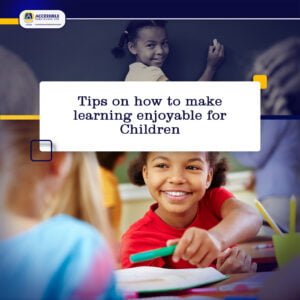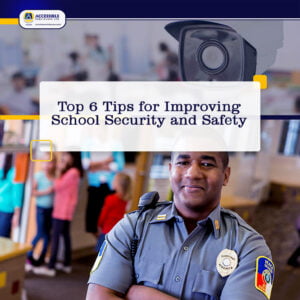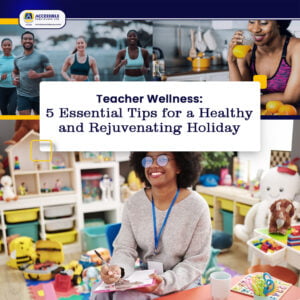As the academic year unfolds, the pivotal juncture of a new session is upon us. For educators deeply committed to their students’ success, this is a moment of strategic significance. The cultivation of effective teaching strategies is the linchpin for a truly fulfilling academic journey.
Teaching as a profession requires constant learning and development. To effectively make a remarkable impact in the lives of your students, you need to devise countless strategies that accommodate all the levels, differences, and learning styles of students.
While it might be easy to set goals for a new academic year, the difficult part is devising the best and working teaching strategy.
What are Teaching Strategies?
Effective teaching strategies comprise proven best practices in education that work in a variety of classroom environments. These strategies are the vehicle to which teachers drive their instruction to meet standards and reach their students’ educational needs.
Meanwhile, it is pertinent to note that in one lesson a teacher may decide to utilize as many different teaching strategies as possible with different end goals.
Benefits of Effective Teaching Strategies.
Effective Teaching Strategy comes with a lot of benefits for both teachers and students. Below are 5 benefits of utilizing an effective teaching strategy:
- Effective teaching strategies can help you assess the needs of your students, allowing you to understand which classroom strategies may be helpful.
- It helps you design interesting lesson plans and encourage an overall enthusiasm for the material.
- Effective teaching strategy helps teachers to better understand how to measure the progress of their students.
- They stimulate the minds of the students to learn.
- The information sticks faster and children are able to understand the subject rather than just memorize.
Effective Teaching Strategies for Rewarding Academic Session
Having exhausted the benefits, we will delve into a compendium of proven methods that promise not only achievement but a truly rewarding educational experience for both teacher and student alike.
It is important to note that what works well in one class might not be that effective in another class, however, it is advisable for teachers to customize the right combination of teaching strategies that suits the need of their classroom.
Below are 10 most effective strategies commonly used by teachers in the classroom.
- Differentiated Instruction:
Differentiated instruction strategies allow teachers to engage each student by accommodating to their specific learning style. According to Howard Gardner’s Multiple Intelligence Theory, “every person has a different mind, and therefore each person learns and understands information differently.”
It helps teachers to ensure that students have the full opportunity to utilize and fulfill their potential.
- Effective Questioning Techniques
Effective questioning technique has a lot of importance when used as a tool to gauge pupils’ understanding of a topic. It’s best for teachers to know and digest different questioning techniques to improve the efficacy of their questioning in the classroom.
- Utilizing Technology in the Classroom:
Integrating technology in the traditional learning space is a great way to empower students to stay connected in this technological era. Technology-rich lessons have been found to keep students motivated and engaged longer.
- Student-led teaching:
The student-led teaching strategy helps teachers to involve students in the teaching process. In a classroom with learners at different levels, you can better engage those learning faster by showing them how to teach and give feedback to their peers.
- Appropriate use of Summative and Formative Assessments:
Tests, projects, classworks and examinations are some examples of Summative and Formative Assessments designed to evaluate students’ understanding of a subject. While these assessments may not be effective for measuring learning ability, they help identify class-wide learning gaps and encourage students to remain attentive to their lessons.
- Response to intervention
Response to intervention (RTI) is a strategy for accommodating a student who may require extra support. This teaching strategy focuses on early and continuous identification, assessment and assistance for students with learning or behavior needs.
- Modeling strategy:
This strategy can be very productive when the teacher is able to set a good example for the students to imitate. Students who identify themselves as visual learners, mostly younger students tends to imitate what they observe instead of what they are told to do.
- Inquiry-based instruction
Inquiry-based instruction uses thought-provoking questions to inspire students to think independently and discuss meaningful topics. This lets you present academic concepts in a way that invites students to reconsider their perspectives and ask questions.
- Experiential learning
Experiential learning uses real-world experience to learn by doing. While traditional lesson plans tend to focus on the teacher, this strategy focuses on students participating in activities they may not immediately recognize as educational. A good example of this is taking students on a field trip combined with practical lessons outside of the classroom that connect to your current curriculum.
Cooperative learning
Group work is a cooperative learning strategy that allows students with various learning levels to work together. By encouraging them to express their own ideas and listen to others’ ideas as a group, you help students develop communication and critical thinking skills.
In addition, as a school teacher, knowing what’s current and evidence-backed is key so that you can make an informed choice the next time somebody suggests implementing a new or innovative teaching technique. One way to stay up-to-date is by reading educational blogs and listening to the best educational podcasts.
In conclusion, teachers need to have a wealth of knowledge in various teaching strategies and a bucket of these strategies to choose from. By trying out strategies such as these, teachers can find the platform that best suits their student’s needs.
Check out our catalogue and explore our world of literature.
Click this link to learn more about us here!







Iscriviti
8 Nov 2024Thanks for sharing. I read many of your blog posts, cool, your blog is very good.
binance referral bonus
29 Dec 2024Thank you for your sharing. I am worried that I lack creative ideas. It is your article that makes me full of hope. Thank you. But, I have a question, can you help me?
Code Binance
20 Apr 2025Your article helped me a lot, is there any more related content? Thanks!